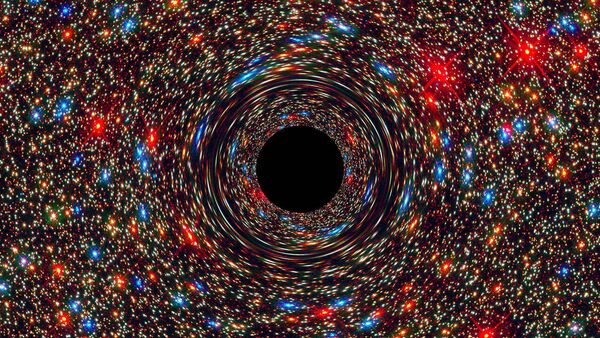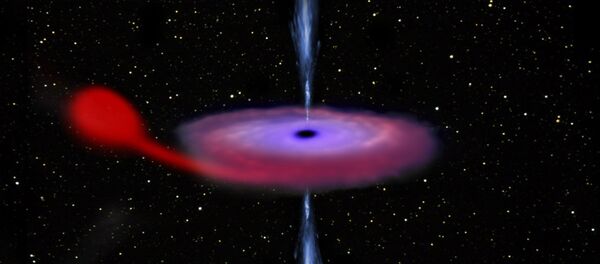The discovery, published in the journal Nature, was made by the Hubble Space Telescope and the Gemini Telescope based in Hawaii, which found a near-record breaking "behemoth" black hole right in the center of sparsely populated galaxy.
How massive is Supermassive black hole in NGC 1600? 17 billion times mass of the sun. As opposed to our SMBH at 4 million. #HubbleHangout
— HubbleTelescope (@HubbleTelescope) April 7, 2016
Astronomers found the NGC 1600 black hole located 200 million light years from Earth and in the direction of the constellation Eridanus.
"The newly discovered supersized black hole resides in the center of a massive elliptical galaxy, NGC 1600, located in a cosmic backwater, a small grouping of 20 or so galaxies," said Chung-Pei Ma, lead scientist behind the discovery and astronomer at the University of California-Berkeley.
The discovery is of major significance as it could prove that the black holes — gigantic objects which are placed in space where the gravitational pull is so intense that even light cannot escape — may be a lot more common than previously thought.
https://t.co/pHfTOVtfzP
— Cosmological (@kenserlore96) April 7, 2016
Supermassive black hole in galaxy NGC 1600 in the middle of nowhere, great comparison #space pic.twitter.com/IiQwKDWfmB
Astronomers pointed out that even though finding a supermassive black hole in a crowded galaxy is nothing new, discovering one in smaller galaxies — or "the universe's small towns," as NASA calls them — is extremely rare.
Previous studies have located gigantic black holes at the center of large galaxies in parts of the universe close to other galaxy clusters. The current record holder, according to NASA, resides in the Coma cluster which consists of more than 1,000 galaxies — and the black hole itself weighs around 21 billion suns.
'Is This the Tip of the Iceberg?'
"There are quite a few galaxies the size of NGC 1600 that reside in average-size galaxy groups.
"…The question now is, 'Is this the tip of an iceberg?' Maybe there are more monster black holes out there that don't live in a skyscraper in Manhattan, but in a tall building somewhere in the Midwestern plains," Ma said.
However, in the curious case of NGC 1600 the predictions don't ring true — the gigantic hole's mass greatly overshadows that of the sparse bulge of stars surrounding it.
"It appears that that relation does not work very well with extremely massive black holes; they are a larger fraction of the host galaxy's mass," Ma said.





